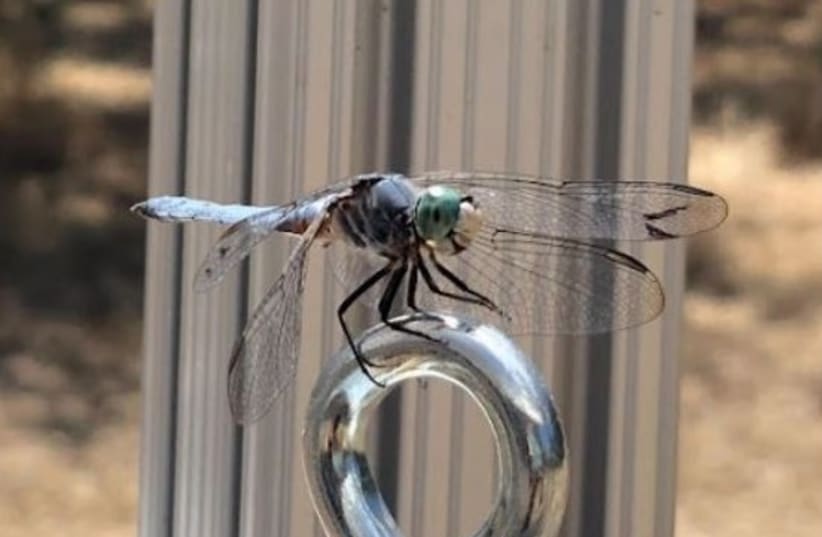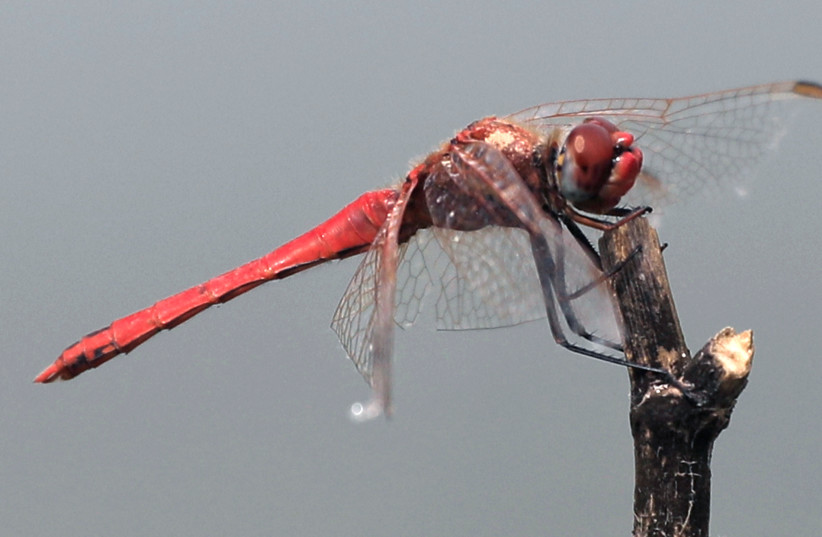Scientists have a lot to learn from blue-dasher dragonflies, which are very small in size but arguably one of the most impressive predators in the animal kingdom. Able to catch up to 95% of their prey in midair, they can teach us a lot about developing better robots.
The blue dasher (Pachydiplax longipennis), a dragonfly of the skimmer family and the only species in the genus Pachydiplax, is very common and widely distributed from the top of North America down to the Bahamas. They are carnivorous, and are capable of eating hundreds of insects every day, including mosquito and mayfly larvae. The adult dragonfly will eat nearly any flying insect including moths and flies.
The males are easy to recognize with their vibrant blue color, yellow-striped thorax and metallic green eyes. Females are somewhat less eye-catching than the male. While they have a matching yellow-striped thorax, their abdomen has a distinct brown and yellow striping that sets them apart from males, along with contrasting red eyes.
Researchers at the University of California at Davis studied the flight behavior of this species. According to Dr. Rachel Crane, a biologist at the university, their catch rate of prey is “wildly high compared to where most predators are – really fast, high-speed aerial captures.”
Although the species name longipennis means “long wings,” theirs are not substantially longer than those of related species. The species exhibits aggression while finding mates and foraging and are not under threat of extinction.
They usually make their homes near a body of water like a stream, river or lake. Smaller males tend to be driven away from breeding grounds by larger males, resulting in smaller males dispersing to other areas. Researchers believe that this method of dispersal could be important in further studies of population genetics and gene flow of this species.
Why study dragonflies to make robots?
This ability of dragonflies to successfully intercept airborne prey – a skill many human-designed robots have yet to master – is what drew Crane and her colleagues to study them. They designed a novel method to test how dragonflies adjust to aerial challenges such as catching prey that speed up unpredictably or zig-zag through the air. Crane will present their study results this month at a meeting of the Society for Integrative and Comparative Biology.
To study dragonfly flight, Crane’s team first designed a programmable pulley system that controls the movements of a bead on a string. Dragonflies are such voracious predators that they will readily attack most small objects flying through the air, even if the object is a tiny bead rather than a tasty fly. The bead’s velocity and acceleration can be set by the researchers simply by adjusting the controls, and its path can be changed by moving the string.
“You can make a circular track, but you can also pull that out of shape in any direction that you want, and all of a sudden your bead is doing these really complex paths.”
Dr. Rachel Crane
“You can make a circular track,” explained Crane, “but you can also pull that out of shape in any direction that you want, and all of a sudden your bead is doing these really complex paths.”
The scientists tested out their new dragonfly playground, starting with a relatively simple task: flying the bead in a straight line at constant velocity and recording the dragonfly’s attack with a high-speed camera. They ran this test repeatedly at different bead velocities to see how dragonflies adjust their own speed in response to that of their prey.
The team found that regardless of how fast or slow the bead went, the dragonflies always flew almost exactly one meter per second faster than the bead. This speed-matching behavior is similar to what scientists had previously observed dragonflies doing while hunting insects.
“We saw a similar thing with the beads that we would see with live prey, which is very exciting and reassuring,” Crane added.
The next step was to examine the dragonflies’ flight patterns in more challenging scenarios, such as when prey suddenly speed up, slow down or change directions unpredictably. These tests could help scientists understand what strategies are most useful for accurately intercepting flying objects.
“We can see where they’re succeeding, how they’re succeeding and how they’re failing,” concluded Crane, “and that can be helpful for 3D robotics challenges.”

